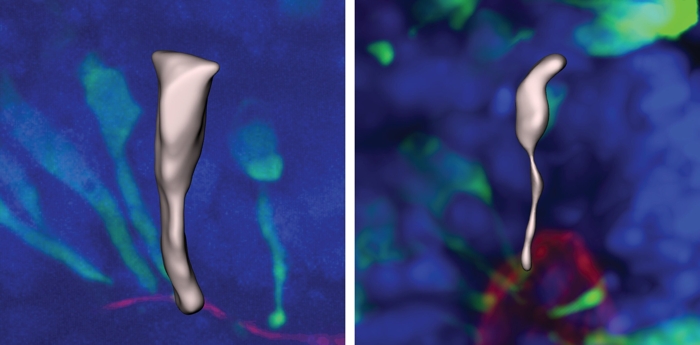What is it about humans that separates us from non-human primates, our closest living relatives? One of the biggest differentiators, scientifically speaking, is the size of our much larger brains – and now, we've found a key secret behind that unrivaled growth.
In new research comparing different types of brain organoids – miniaturized masses of brain tissue grown from stem cells – scientists found a key developmental difference in neural stem cell development between human, gorilla, and chimpanzee brain tissue.
Neural stem cells (also called neuroepithelial cells) are a form of multipotent stem cell, giving rise to the neurons and glial cells that make up the central nervous system. But the way this transition occurs during early brain development is not the same in all primates, the new research shows.
As neural stem cells transition into specific brain cell types, they change their shape, which in turn affects the rate at which they can divide and eventually form neurons. In mice, it was known that such shape-changing occurs in just a matter of hours, ultimately limiting the amount of brain cells the animals produce.
 (S.Benito-Kwiecinski/MRC LMB/Cell)
(S.Benito-Kwiecinski/MRC LMB/Cell)
Above: Neural stem cells at five days, with a different, less altered shape in humans (left) compared with apes (right).
Now, scientists from the UK Medical Research Council's Laboratory of Molecular Biology (LMB) have shown that the process takes significantly longer in primates, lasting several days, in fact. For gorillas and chimpanzees, the delayed shape-changing gives them about five days to keep generating new neurons.
Human neuroepithelial cells take even longer to transition – a whole week even, enabling neurogenesis processes to run for more time, which in turn makes more brain cells, more brain tissue, and ultimately yielding larger brains (or, as seen here, bigger organoids sitting in a dish).
"We have found that a delayed change in the shape of cells in the early brain is enough to change the course of development, helping determine the numbers of neurons that are made," explains LMB developmental biologist and lead researcher Madeline Lancaster.
"It's remarkable that a relatively simple evolutionary change in cell shape could have major consequences in brain evolution."
In addition to identifying the difference in transition, however, analysis of the organoids has also revealed what makes the developmental changes possible.
According to the researchers, a gene called ZEB2 plays a central role in regulating the process, prompting the neural stem cells to change shape and effectively mature earlier, which shortens the amount of time they can proliferate before becoming the progenitor cells that eventually form into neurons.
 (S.Benito-Kwiecinski/MRC LMB/Cell)
(S.Benito-Kwiecinski/MRC LMB/Cell)
Above: Human brain organoids at five weeks old, substantially larger than gorilla and chimpanzee organoids (left to right, respectively).
Not only that, but in experiments in which ZEB2 expression dynamics were manipulated, the researchers showed that the organoids too could be manipulated – with human brain organoids growing smaller when the gene was enhanced, and a gorilla organoid more closely resembling the volume of human brain tissue when ZEB2 was inhibited.
The researchers emphasize that organoid tissue is never a perfect representation of actual animal organs, so we can't conclude ZEB2 activity and inactivity would function exactly the same way in real human or non-human primate brains.
Nonetheless, the researchers say this is a huge clue as to what's likely accounting for much of the difference in brain size between humans and other great apes – and future studies, including experimentation with transgenic mice or imaging of ape embryos, might shed further light still.
"This provides some of the first insight into what is different about the developing human brain that sets us apart from our closest living relatives, the other great apes," says Lancaster.
"I feel like we've really learned something fundamental about the questions I've been interested in for as long as I can remember – what makes us human."
The findings are reported in Cell.
Article From & Read More ( Scientists Found a Key Neurological Switch That Makes Human Brains So Large - ScienceAlert )https://ift.tt/3lNyJR3
Science
No comments:
Post a Comment